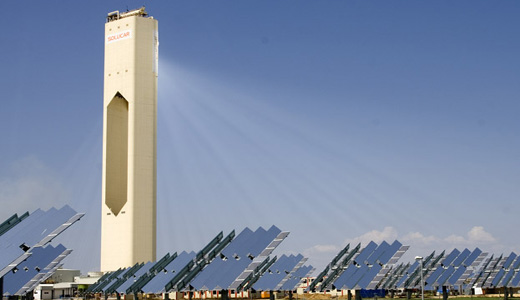
The energy’s always greener on the other side…of the world, that is. Particularly, in China.
In fact, according to the Environmental Defense Fund’s Tony Kreindler, China is “already beating the U.S. to clean energy jobs” and “is quickly becoming the global powerhouse in clean energy manufacturing and innovation, dwarfing the efforts of America.”
China wants to employ a massive renewable energy development plan. Part of it calls for non-fossil fuel energy production to reach and remain above 11 percent of total energy production in the country by 2015. China also intends to put a million electric vehicles on the market by that same year.
In the wake of the nuclear disaster in Japan, countries everywhere are rethinking the nuclear equation – especially China. And the country has ideas in the works for all aspects of alternative energy.
Solar
China Briefing reported that China is a “major player” in the international solar power market, in terms of both production and consumption. In 2010, the country was responsible for manufacturing the most solar panels in the world.
Perhaps the greatest prospect on the horizon in regard to solar power is a new approach by scientists that, according to Energy Biz, would combine current fission technology with fusion, which is essentially a similar process to that which gives power to the sun. Though this particular idea still involves nuclear power, scientists believe it would be a safer approach.
Wind
Steve Sawyer, Secretary General of the Global Wind Energy Council, said in 2010, “China has become the single largest driver for global wind power development.”
Indeed, China produces more wind energy that any other country in the world, with a total installed wind power capacity of 44.5 gigawatts.
Hydro
Again, China leads the world in total hydropower capacity. The initial phase of the Three Gorges Dam was completed in 2006, renewing government interest in the energy.
The hydroelectric dam is located in the Yiling District of Yichang, in Hubei province. While producing electricity, the dam also increases the Yangtze River’s shipping capacity and reduces the potential for flooding by providing “storage space” for excess water.
However, the dam has been a controversial subject, as 1.24 million Chinese residents were relocated in June 2008 due to the dam’s construction.
The bottom line seems to be that China needs to find ways to avoid risking a Fukushima-type tragedy. In order to do this, precaution, China seems to feel, ought to be coupled with progress.
In regard to alternative energy, more and more Americans seem to be advocating it. A new survey conducted by RC International for the nonprofit and nonpartisan Civil Society Institute said that the majority of people in the U.S. would freeze new nuclear power construction. They would also stop more federal loan guarantees for reactors, and move away from nuclear power altogether, instead seeking out solar and wind power.
This majority opinion is especially relevant not only after Japan’s nuclear meltdown, but during a time in which a wildfire in Los Alamos, N.M. is threatening a local nuclear weapons laboratory. If the fire reaches barrels of waste stored in aboveground tents, CBS News reported, the result could be a plume of radioactive smoke.
The difference, however, between the U.S. and China, is that the latter has taken further steps in its pursuit of renewable energy.
According to DIY Green Energy, the cost of solar power, for example, was falling there.
Dr. Hao Guoqiang, Vice President of Shanghai Solar Energy Research Center, was confident that “In 2015, the cost of supplying solar electricity will be about the same as” current U.S. electricity fees. “The cost of solar energy,” he added, “is reducing over these past few years. The drop is about 10 percent to 20 percent each year.”
Photo: Spain’s PS10 is the first solar thermal power plant in the form of a tower that generates electricity in a commercial way. Japan is expected to move forward with solar power. Wikipedia // CC 2.0








